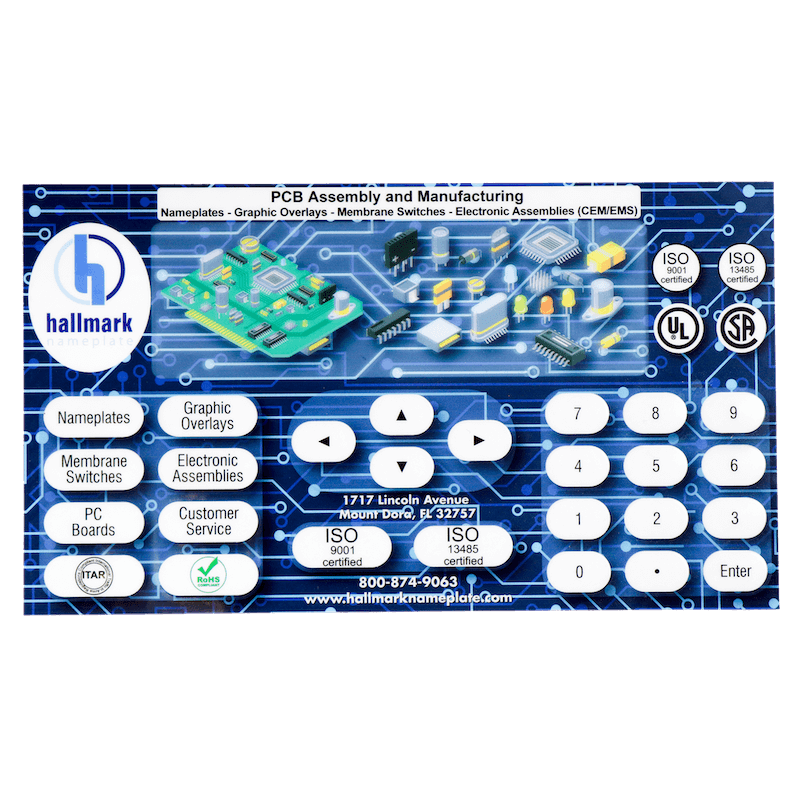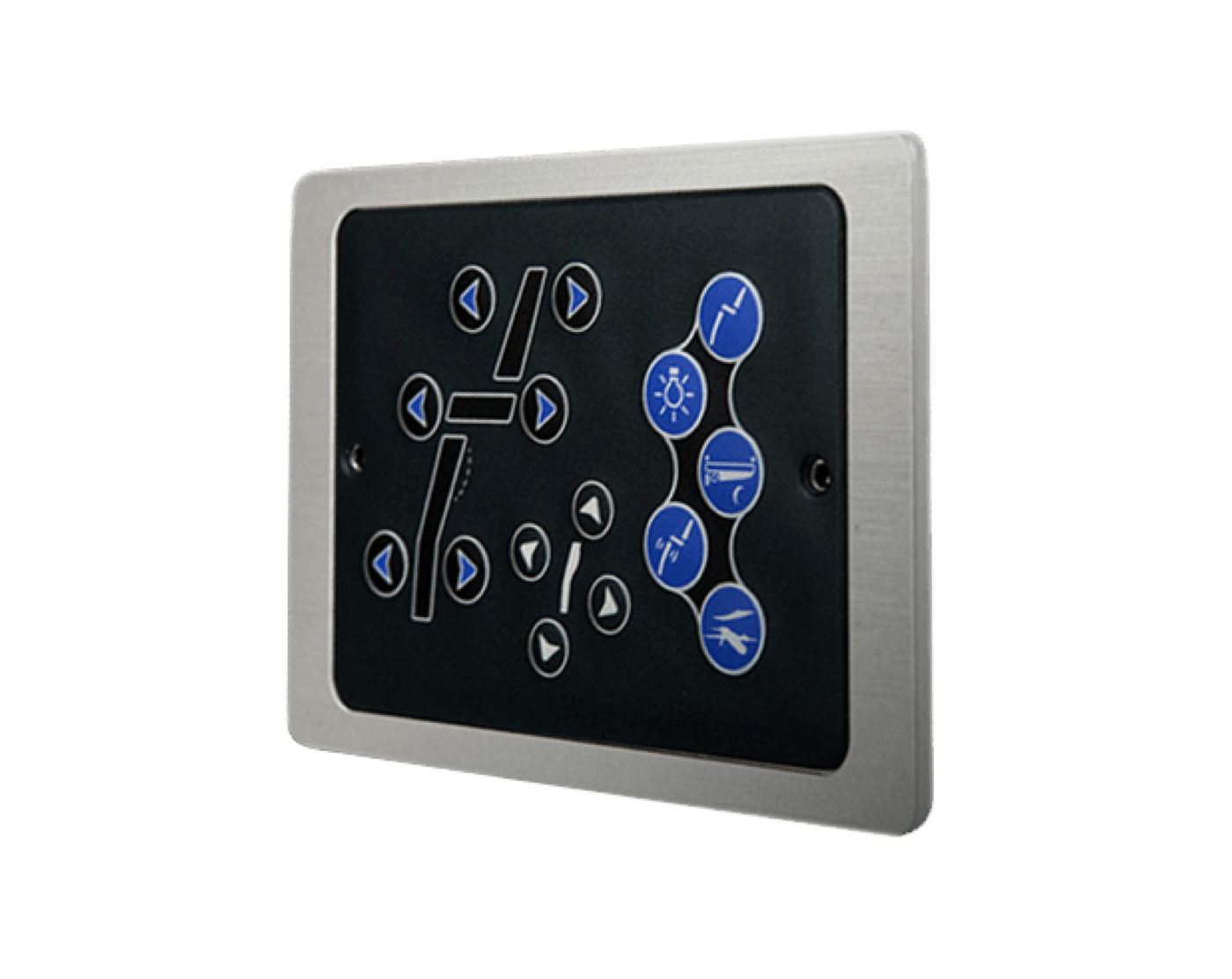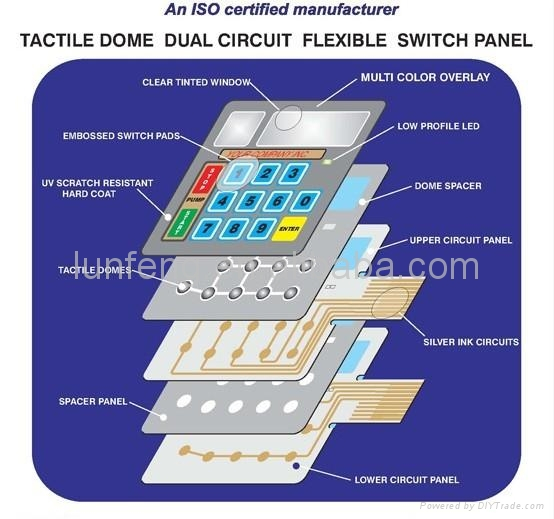How Membrane Switches Improve Durability in Harsh Environments
How Membrane Switches Improve Durability in Harsh Environments
Blog Article
Understanding the Relevance of Membrane Switches in Customer Interfaces
Membrane buttons are indispensable elements in the design of reliable interface, facilitating not just functionality but also boosting visual allure and individual communication. Their one-of-a-kind attributes, such as resistance to ecological factors and personalized layouts, make them appropriate for a varied variety of applications throughout several sectors. As we discover the future patterns and various advantages associated with Membrane modern technology, it comes to be clear that these switches are more than simply parts; they represent a convergence of technology and functionality. The implications of this innovation on user experience are worth checking out even more.
What Are Membrane Buttons?

The spacer layer, which consists of adhesive residential properties, enables the splitting up of the circuit layer from the overlay, guaranteeing that the button continues to be in a non-activated state up until pressed. When pressure is put on the overlay, it presses the spacer layer, connecting the space and completing the circuit in the underlying layer. This layout not just reduces the physical space required for typical mechanical switches however also improves the longevity of the tool, as Membrane buttons are normally immune to dust, moisture, and other environmental elements.
Generally located in applications varying from customer electronic devices to medical tools, Membrane switches are indispensable to contemporary technology, offering a straightforward and efficient user interface that straightens with contemporary layout needs.
Advantages of Membrane Buttons
While numerous button modern technologies exist, Membrane Switches offer distinct advantages that make them especially preferable in numerous applications. One of the key advantages of Membrane buttons is their portable design, which enables space-saving implementations in gadgets where genuine estate is limited. Their thin account not just improves visual charm but also facilitates light-weight building and construction.
Another substantial advantage is their resistance to environmental aspects. Membrane buttons are commonly secured against dampness, dust, and pollutants, making them excellent for usage in requiring environments, such as clinical tools and industrial equipment. This toughness expands the life expectancy of the button, minimizing upkeep prices and improving dependability.
Additionally, Membrane switches can be customized to fulfill details layout demands, integrating special graphics and shades that boost individual communication. Their tactile responses alternatives can also be customized to give a satisfying user experience. Furthermore, Membrane switches are cost-effective, particularly in high-volume applications, as they can be generated successfully.
Applications in Numerous Industries

In the consumer electronic devices field, Membrane buttons are prevalent in tools such as microwaves, washing machines, and remote controls. Their tactile feedback and aesthetic choices boost user experience while giving a streamlined, modern appearance. Additionally, auto manufacturers use Membrane switches in control panel controls and infotainment systems, where area is limited, and individual engagement is crucial.
Additionally, the commercial sector leverages Membrane buttons in control panels for equipment and devices, permitting instinctive operation in frequently extreme environments. Their resistance to chemicals and dampness guarantees longevity and reliability in these applications. On the whole, the adaptability of Membrane Switches contributes substantially to their prevalent use, making them vital in numerous technological domains.
Style Factors To Consider for Membrane Switches

When making Membrane buttons, a number of vital considerations need to be considered to ensure optimum functionality and user experience. The choice of materials is important; choosing resilient, top notch substratums can improve the switch's durability and resistance to environmental variables such as moisture and temperature fluctuations.
Second of all, the design of the visuals overlay ought to focus on quality and ease of usage. Symbols and text must be legible, and the design needs to click site help with user-friendly interaction (membrane switches). Additionally, tactile responses is necessary; including a tactile dome or various other systems can enhance the user experience by providing physical verification of activation
An additional essential factor is the button's electrical performance. Developers must ensure that the conductive traces are properly made to minimize resistance and avoid signal disturbance. This involves evaluating the called for actuation force and guaranteeing compatibility with the electronic elements they will certainly user interface with.

Future Patterns in Membrane Innovation
As modern technology continues to advancement, Membrane buttons are poised to progress dramatically, driven by advancements in products and manufacturing techniques. One arising fad is the unification of advanced materials, such as view conductive inks and adaptable substrates, which boost resilience and decrease the general weight of Membrane switches. These products not just improve the tactile reaction however likewise permit the layout of buttons that can endure harsher environmental conditions.
In addition, the assimilation of touch-sensitive modern technologies is transforming typical Membrane Switches into even more interactive customer interfaces. Capacitive touch sensing units embedded within Membrane switch panels can provide a much more instinctive and receptive individual experience, lining up with the growing demand for sleek, modern designs in consumer electronics.
Additionally, advancements in printing techniques, such as digital and 3D printing, make it possible for quick prototyping and personalization of Membrane switches. This versatility allows suppliers to respond more promptly to market demands and customer preferences.
Finally, sustainability is ending up being a significant emphasis, try this with suppliers discovering environmentally friendly materials and procedures. As these fads unfold, the future of Membrane technology assures enhanced performance, aesthetic appeal, and environmental obligation, strengthening their duty in innovative interface across various industries.
Verdict
In verdict, Membrane Switches stand for an important element in the design of user interfaces, combining functionality with visual flexibility. As improvements in technology continue, the advancement of Membrane buttons is expected to more improve individual interfaces, driving advancement and enhancing functionality in a progressively complex technological landscape.
Membrane buttons are integral elements in the style of effective customer interfaces, promoting not just performance yet likewise improving visual appeal and user communication.Membrane Switches offer as a vital element in different customer interfaces, facilitating a seamless interaction between individuals and digital tools.While countless switch technologies exist, Membrane Switches deal distinct benefits that make them specifically desirable in various applications.Moreover, Membrane buttons can be tailored to satisfy specific design requirements, integrating unique graphics and colors that enhance customer communication.In conclusion, Membrane Switches stand for a vital part in the design of individual interfaces, integrating capability with visual adaptability.
Report this page